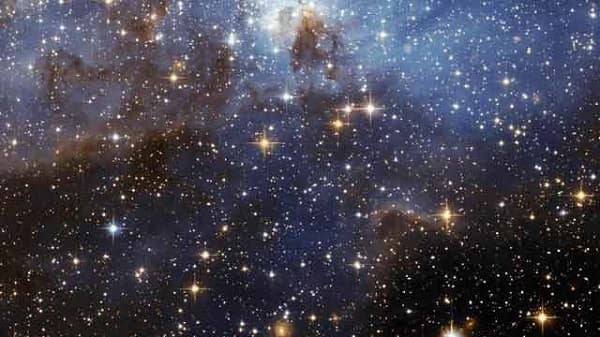Edinburgh Team Will Broadcast Globally Collected Messages To The North Star
Man's attempts to communicate with probable interstellar inhabitants will receive a new boost this autumn when a set of messages collected globally will be broadcast to stars through space artistic odyssey.
A research team from the University of Edinburgh says it will convert the messages from the public into radio waves, bottle them into a transmittable form and send the resultant signals to the North Star, Polaris. Narrowing down the destination to Polaris was easy for the scientists because of its "cultural significance" as a reference point for navigators and star gazers.

In 1977, NASA dispatched humanity's first message to space with Voyager 1 in the form of a gold-plated phonograph record called the Golden Record. It contained images and sounds of Earth life and culture, including musical selections from a diverse cultures and era, and greeting messages from the people of earth in 55 different languages. The Edinburgh team claims that their message will surpass that of Voyager's within 21 hours of its launch.
Theoretically, the message should reach its destination in 434 years. Trying to imagine the reach of the technological advancements of mankind by then, the ramifications of such a development look fascinating even at this moment.
The project is a collaboration between the university, the Royal Observatory of Edinburgh, the UK Astronomical Technology Centre. The question that has been put up for the public around the world is relatively simple: How will our present environmental interactions shape the future? 811 contributions have been sent to ‘A Simple Response to an Elemental Message’. Send in yours #-Link-Snipped-#.
Source: #-Link-Snipped-#
A research team from the University of Edinburgh says it will convert the messages from the public into radio waves, bottle them into a transmittable form and send the resultant signals to the North Star, Polaris. Narrowing down the destination to Polaris was easy for the scientists because of its "cultural significance" as a reference point for navigators and star gazers.

In 1977, NASA dispatched humanity's first message to space with Voyager 1 in the form of a gold-plated phonograph record called the Golden Record. It contained images and sounds of Earth life and culture, including musical selections from a diverse cultures and era, and greeting messages from the people of earth in 55 different languages. The Edinburgh team claims that their message will surpass that of Voyager's within 21 hours of its launch.
Theoretically, the message should reach its destination in 434 years. Trying to imagine the reach of the technological advancements of mankind by then, the ramifications of such a development look fascinating even at this moment.
The project is a collaboration between the university, the Royal Observatory of Edinburgh, the UK Astronomical Technology Centre. The question that has been put up for the public around the world is relatively simple: How will our present environmental interactions shape the future? 811 contributions have been sent to ‘A Simple Response to an Elemental Message’. Send in yours #-Link-Snipped-#.
Source: #-Link-Snipped-#
0
